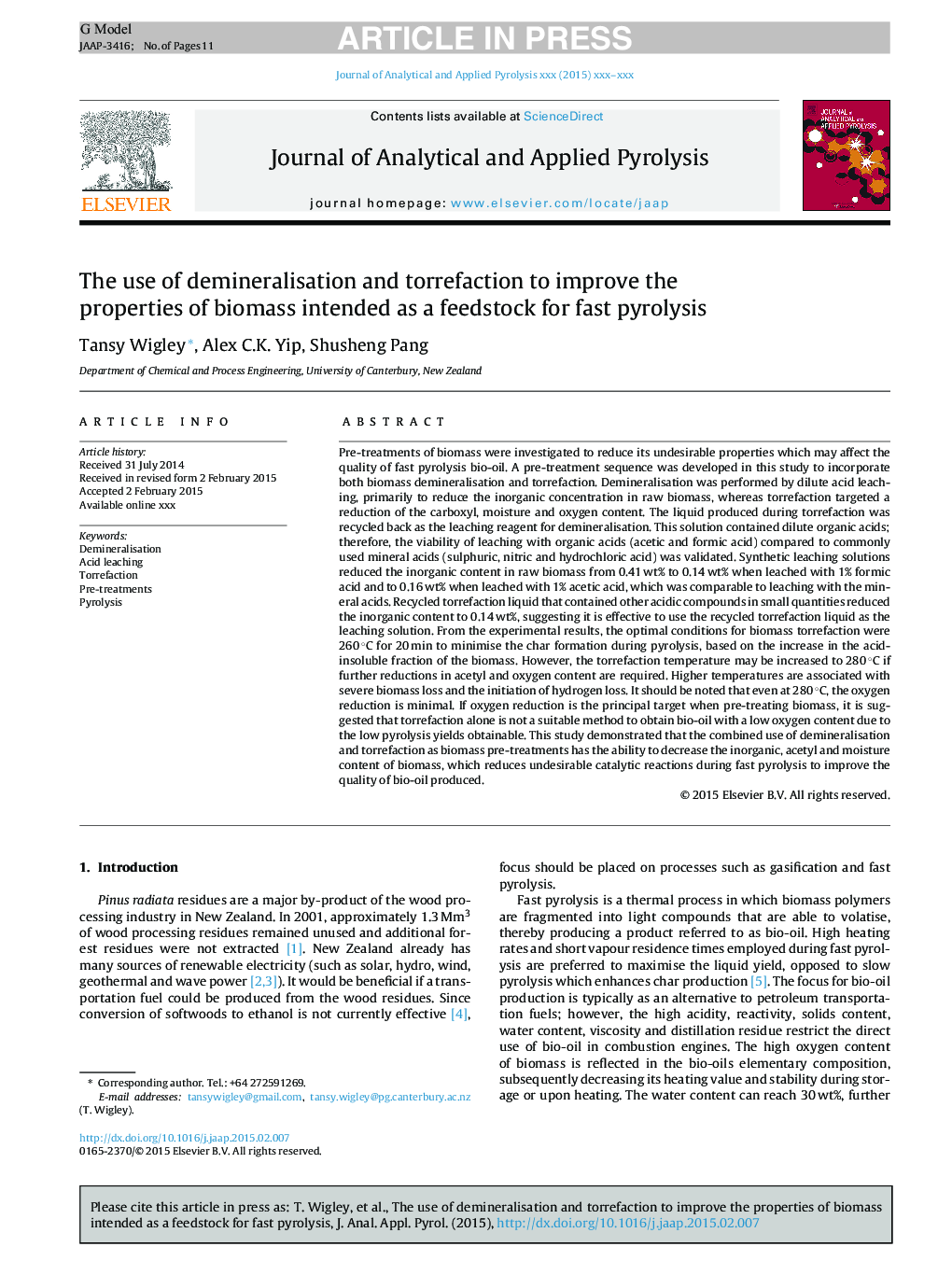| Article ID | Journal | Published Year | Pages | File Type |
|---|---|---|---|---|
| 7606727 | Journal of Analytical and Applied Pyrolysis | 2015 | 11 Pages |
Abstract
Pre-treatments of biomass were investigated to reduce its undesirable properties which may affect the quality of fast pyrolysis bio-oil. A pre-treatment sequence was developed in this study to incorporate both biomass demineralisation and torrefaction. Demineralisation was performed by dilute acid leaching, primarily to reduce the inorganic concentration in raw biomass, whereas torrefaction targeted a reduction of the carboxyl, moisture and oxygen content. The liquid produced during torrefaction was recycled back as the leaching reagent for demineralisation. This solution contained dilute organic acids; therefore, the viability of leaching with organic acids (acetic and formic acid) compared to commonly used mineral acids (sulphuric, nitric and hydrochloric acid) was validated. Synthetic leaching solutions reduced the inorganic content in raw biomass from 0.41 wt% to 0.14 wt% when leached with 1% formic acid and to 0.16 wt% when leached with 1% acetic acid, which was comparable to leaching with the mineral acids. Recycled torrefaction liquid that contained other acidic compounds in small quantities reduced the inorganic content to 0.14 wt%, suggesting it is effective to use the recycled torrefaction liquid as the leaching solution. From the experimental results, the optimal conditions for biomass torrefaction were 260 °C for 20 min to minimise the char formation during pyrolysis, based on the increase in the acid-insoluble fraction of the biomass. However, the torrefaction temperature may be increased to 280 °C if further reductions in acetyl and oxygen content are required. Higher temperatures are associated with severe biomass loss and the initiation of hydrogen loss. It should be noted that even at 280 °C, the oxygen reduction is minimal. If oxygen reduction is the principal target when pre-treating biomass, it is suggested that torrefaction alone is not a suitable method to obtain bio-oil with a low oxygen content due to the low pyrolysis yields obtainable. This study demonstrated that the combined use of demineralisation and torrefaction as biomass pre-treatments has the ability to decrease the inorganic, acetyl and moisture content of biomass, which reduces undesirable catalytic reactions during fast pyrolysis to improve the quality of bio-oil produced.
Related Topics
Physical Sciences and Engineering
Chemistry
Analytical Chemistry
Authors
Tansy Wigley, Alex C.K. Yip, Shusheng Pang,
